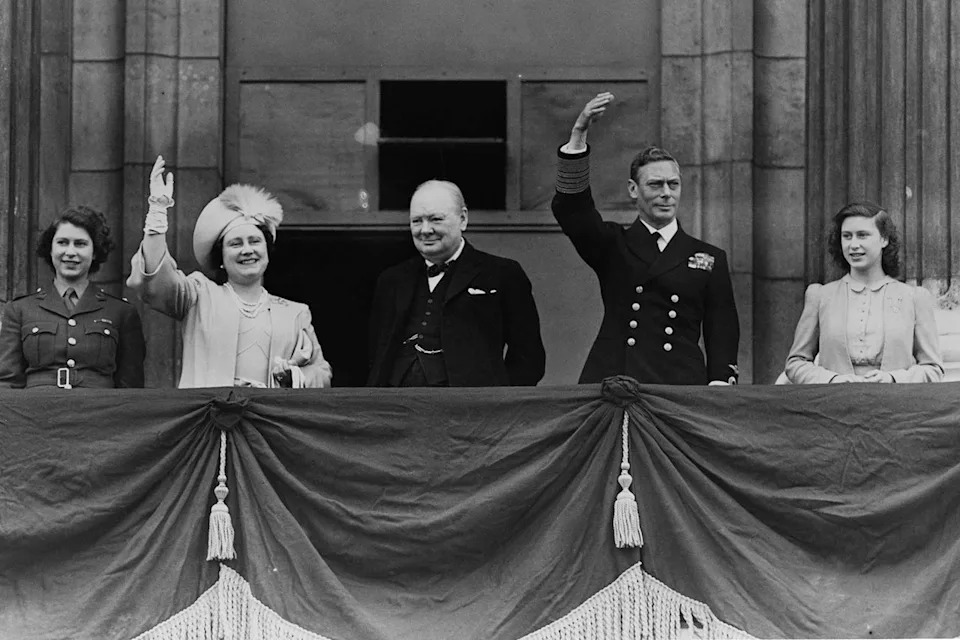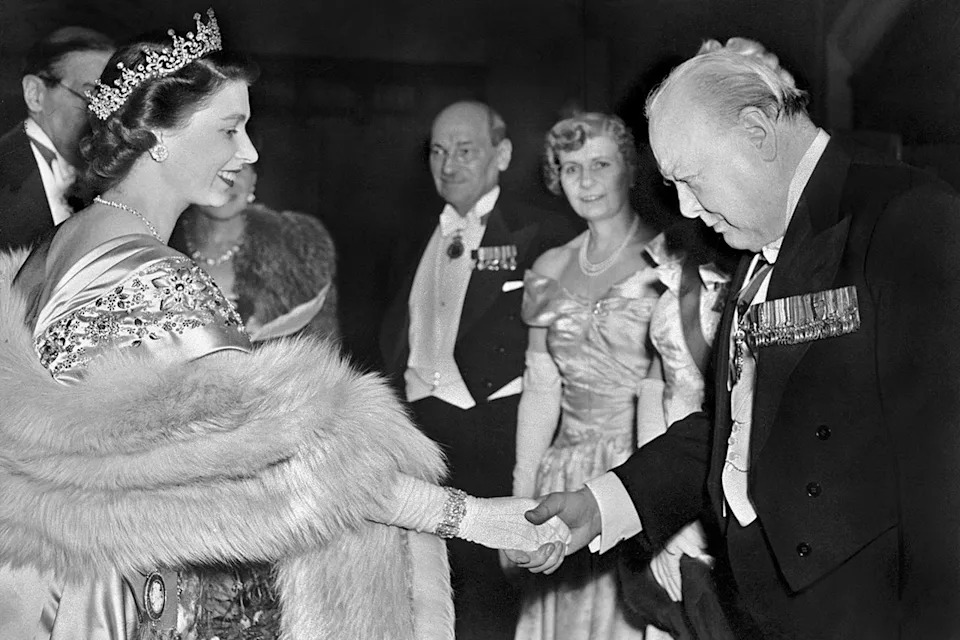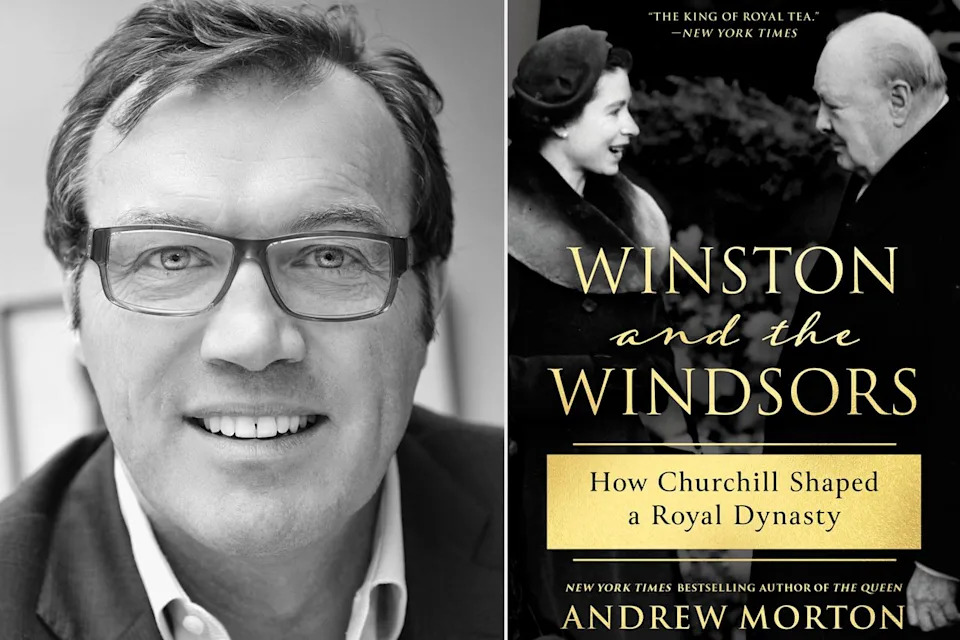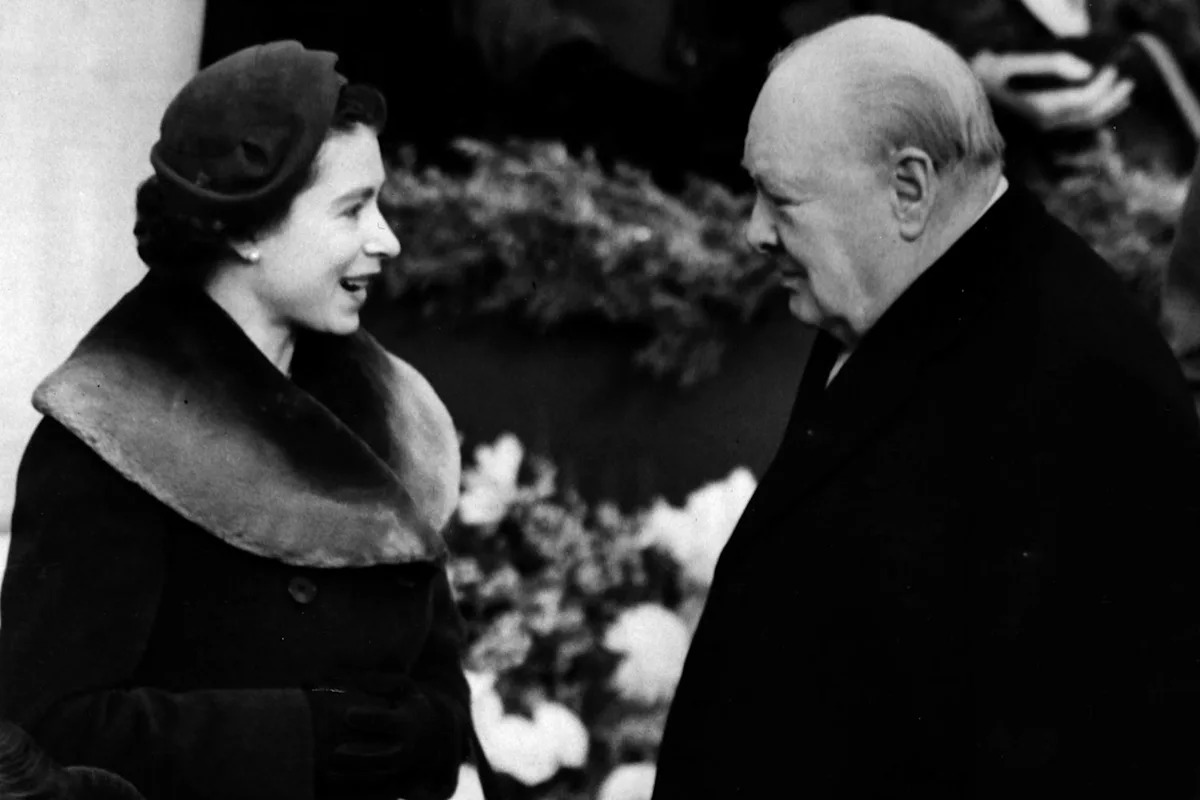Winston Churchill was the first prime minister of Queen Elizabeth’s reign — and said to be her favorite of the 15 who held the position during her 70 years on the throne
Andrew Morton, famous for writing the Diana: Her True Story biography of the late Princess Diana, is exploring Churchill’s links with the royals in Winston and the Windsors, out on Oct. 21
The book recounts Churchill’s relationship with the Queen and former kings, including her father and uncle
Queen Elizabeth would not have navigated the difficult first years of her record-breaking reign if it weren’t for the sure touch of her favorite prime minister, Winston Churchill, author Andrew Morton believes.
The Queen, who inherited the throne at the age of just 25 and was the first female sovereign since Queen Victoria’s death 51 years earlier, found herself learning the new demands as head of state amid friction within her own family.
“He came into her life at a time of tragedy and loss, and advised and guided her through a very difficult family maze,” Morton tells PEOPLE. His new book, Winston and the Windsors (out Oct. 21), captures the prime minister’s key role in Elizabeth’s public life and in shaping the modern royal family.

Reg Speller/Getty
British Prime Minister Winston Churchill (center) on the Buckingham Palace at VE Day which marked the end of the Second World War
The monarch and the prime minister had mutual points of connection through their shared interests in horses and horse breeding, Morton says, which helped them bond. “He admired the fact that not only was she beautiful, but she was also a solid character. She was very much her father’s daughter, and he admired her for that,” Morton adds. “And I think there’s little doubt that he was her favorite of the 15 prime ministers that she had.”
With Elizabeth’s father, King George VI, dying suddenly in 1952 (while Elizabeth and her husband, Prince Philip, were away in Kenya), the big job came earlier than expected, especially for Elizabeth’s husband.
”He was disappointed that he couldn’t that he’s had to give up his naval career. He expected George VI to live a lot longer so that he could have enjoyed a lot more time in the Navy,” says Morton. “So he was like a bear with a sore head.”
Then there was Elizabeth’s request to live at Clarence’s House, which was rejected by politicians and courtiers.
“Where the flag flies, that’s where the Queen was to stay,” was how it was put to them, Morton says.
“So then they trooped over to Buckingham Palace. Philip argued that the dynasty should now be called the House of Mountbatten. Because that was his surname, and every spouse takes the husband’s surname. And when Churchill put a stop to that, along with Queen Mary and the cabinet, and insisted that they’d be called Windsor after George V’s decision in 1917, Prince Philip declared, ‘I’m nothing but a bloody amoeba.’”

AFP via Getty
Princess Elizabeth greeting Winston Churchill at a reception at the Guildhall in London in March 1950
But with the Queen — mom to two young children in the future King Charles and Princess Anne —needing more senior royals around her for support, it was Churchill who stepped in and went to Birkhall in Scotland to see Elizabeth’s mother, who had retired in mourning.
“He took it upon himself to go convince her to return to royal life. I would argue it was one of the great successes of his relationship with the Queen, because the Queen couldn’t convince her mother to come back into public life, but Churchill did,” Morton says. “And she was, as we know, during that whole period, a great asset of the monarchy. She was a real national treasure.”
Queen Elizabeth also had to contend with the fact that her younger sister, Princess Margaret, “was in pieces over the death of her father, but also, having an illicit affair with a recently divorced equerry, Group Capt. Peter Townsend,” Morton says. “That placed the Queen in a very difficult position because she didn’t want to affect her sister’s happiness, but at the same time, the Church of England’s teachings were that a divorced woman cannot marry in church.”
Churchill’s reaction to the union had been positive, Morton says. “He thought it was wonderful. A beautiful princess marrying a war hero. They were also, by the way, the same instincts as the majority of the people who were perfectly happy for them to wed, but the Royal Marriages Act of 1701 meant that they had to get permission from the Queen, and they could only marry without that permission after the age of 25.”

Ken Lennox; Hanover Square Press
Author Andrew Morton and the jacket of his new book
“It’s a sign of how deeply embedded he was in the House of Windsor, that when he first offered to take the issue to the cabinet, the Queen said to him, ‘Let’s just keep it in the family’ — and that also included Churchill. He was like the godfather of the whole House of Windsor. His response was favourable towards Margaret and Townsend, but then he realized that the Constitution and the Church of England were stumbling blocks.”
The partnership flourished. “Churchill believed she had the temperament of a bureaucrat, but the glamour of a queen,” Morton tells PEOPLE. “She was very firm in some of her points of view and quite stubborn, and Churchill, who saw his position very much as an adviser, respected that.”
Can’t get enough of PEOPLE’s Royals coverage? Sign up for our free Royals newsletter to get the latest updates on Kate Middleton, Meghan Markle and more!
Such was Churchill’s importance to the monarch — and his standing with the British people — that Queen Elizabeth granted him a state funeral at St. Paul’s Cathedral in 1965. She went on to serve for 70 years before her death at 96 in September 2022.
Read the original article on People
